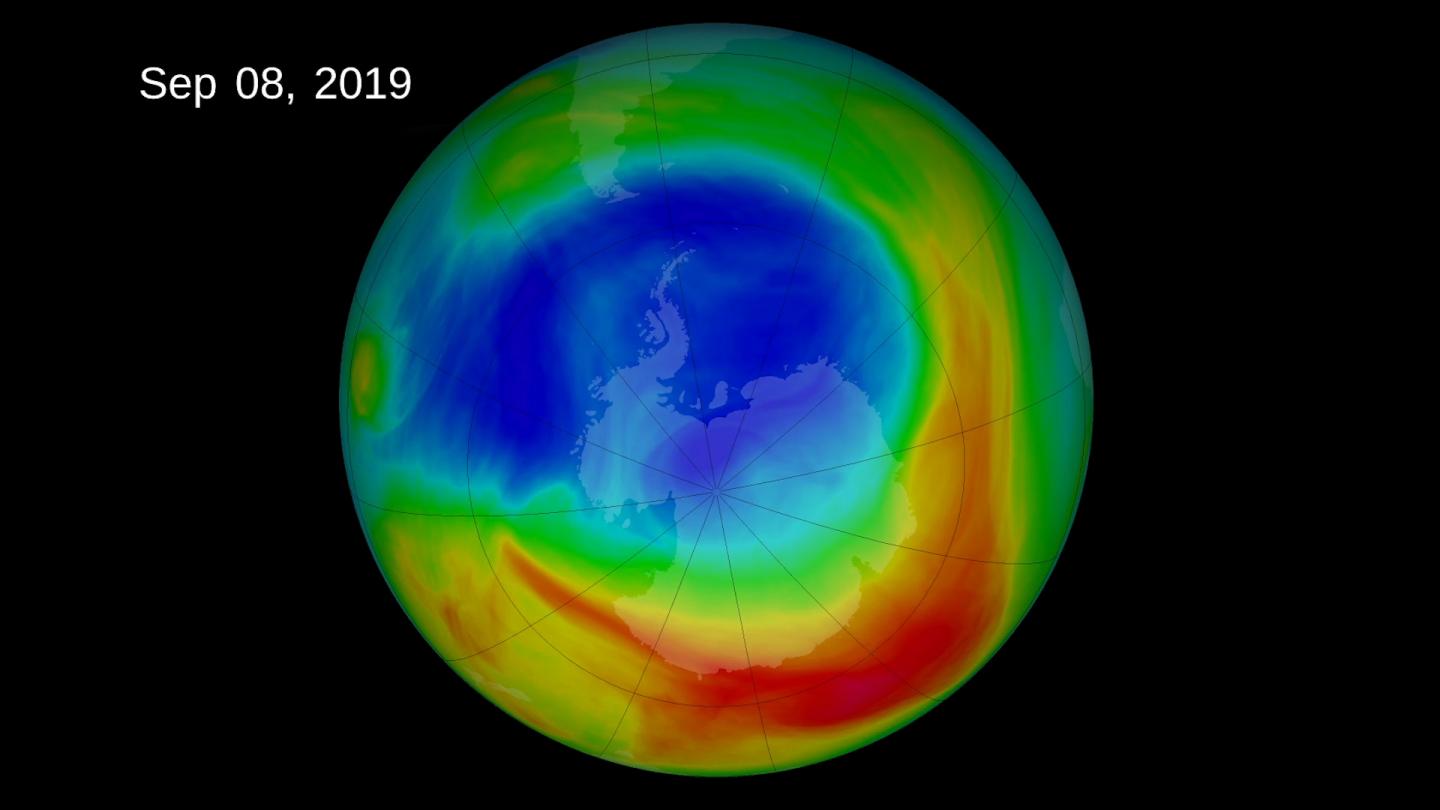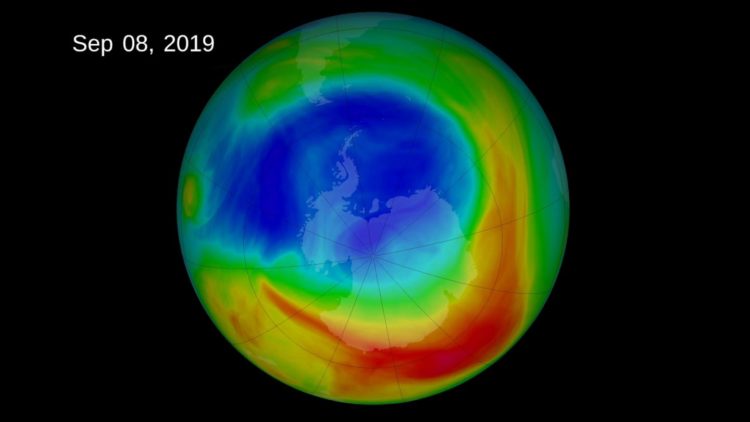Study adds to evidence showing effectiveness of Montreal Protocol

Credit: NASA
Chemicals that deplete Earth’s protective ozone layer have also been triggering changes in Southern Hemisphere atmospheric circulation. Now, new research in Nature finds that those changes have paused and might even be reversing because of the Montreal Protocol, an international treaty that successfully phased out use of ozone-depleting chemicals.
“This study adds to growing evidence showing the profound effectiveness of the Montreal Protocol. Not only has the treaty spurred healing of the ozone layer, it’s also driving recent changes in Southern Hemisphere air circulation patterns,” said lead author Antara Banerjee, a CIRES Visiting Fellow at the University of Colorado Boulder who works in the Chemical Sciences Division of the National Oceanic and Atmospheric Administration (NOAA). She started this work as a Postdoctoral Fellow at Columbia University.
The ozone hole, discovered in 1985, has been forming every spring in the atmosphere high over Antarctica. Ozone depletion cools the air, strengthening the winds of the polar vortex and affecting winds all the way down to the lowest layer of Earth’s atmosphere. Ultimately, ozone depletion has shifted the midlatitude jet stream and the dry regions at the edge of the tropics toward the South Pole.
Previous studies have linked these circulation trends to weather changes in the Southern Hemisphere, especially rainfall over South America, East Africa, and Australia, and to changes in ocean currents and salinity.
The Montreal Protocol of 1987 phased out production of ozone-destroying substances such as chlorofluorocarbons (CFCs). Beginning around 2000, concentrations of those chemicals in the stratosphere started to decline and the ozone hole began to recover. In this study, Banerjee and her co-authors have shown that around the year 2000, the circulation of the Southern Hemisphere also stopped expanding polewards–a pause or slight reversal of the earlier trends.
“The challenge in this study was proving our hypothesis that ozone recovery is in fact driving these atmospheric circulation changes and it isn’t just a coincidence,” Banerjee said.
To do that, the researchers used a two-step statistical technique called detection and attribution: detecting whether certain patterns of observed wind changes are unlikely to be due to natural variability alone and, if so, whether the changes can be attributed to human-caused factors, such as emissions of ozone-depleting chemicals and CO2.
Using computer simulations, the researchers first determined that the observed pause in circulation trends couldn’t be explained by natural shifts in winds alone. Next, they isolated the effects of ozone and greenhouse gases separately.
They showed that while rising CO2 emissions have continued expanding the near-surface circulation (including the jet stream) polewards, only the ozone changes could explain the pause in circulation trends. Prior to 2000, both ozone depletion and rising CO2 levels pushed the near-surface circulation poleward. Since 2000, CO2 has continued to push this circulation poleward, balancing the opposing effect of the ozone recovery.
“Identifying the ozone-driven pause in circulation trends in real-world observations confirms, for the first time, what the scientific ozone community has long predicted from theory,” said John Fyfe, a scientist at Environment and Climate Change Canada and one of the paper’s co-authors.
With ozone beginning to recover and CO2 levels continuing to climb, the future is less certain, including for those Southern Hemisphere regions whose weather is affected by the jet stream and those at the edge of the dry regions.
“We term this a ‘pause’ because the poleward circulation trends might resume, stay flat, or reverse,” Banerjee said. “It’s the tug of war between the opposing effects of ozone recovery and rising greenhouse gases that will determine future trends.”
###
CIRES is a partnership of CU Boulder and NOAA.
Other authors include Lorenzo M. Polvani (Columbia University), Darryn Waugh (The John Hopkins University), Kai-Lan Chang (CIRES, CU Boulder and NOAA).
Media Contact
Kelsey Simpkins
[email protected]
303-735-1874
Original Source
https:/
Related Journal Article
http://dx.





